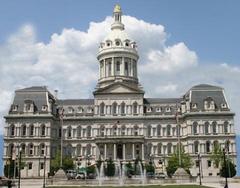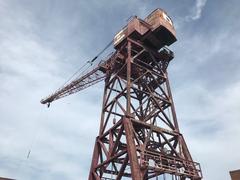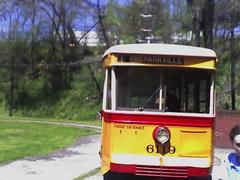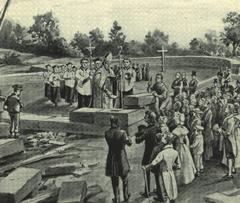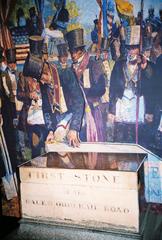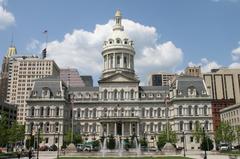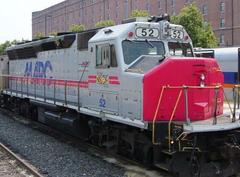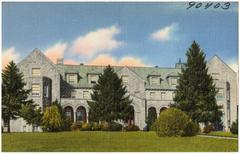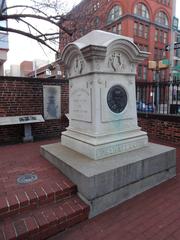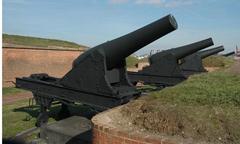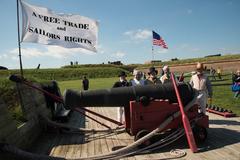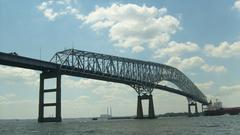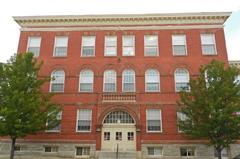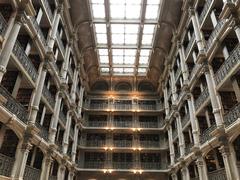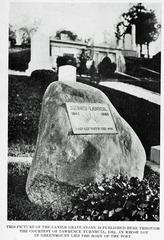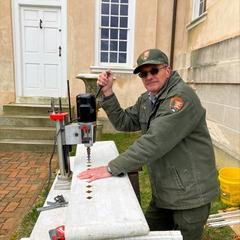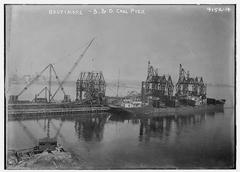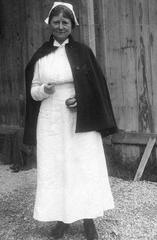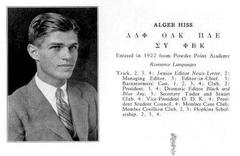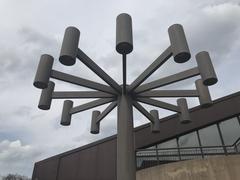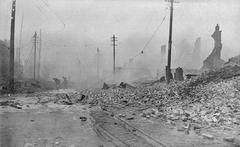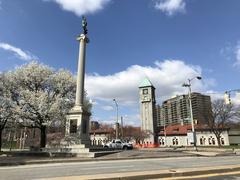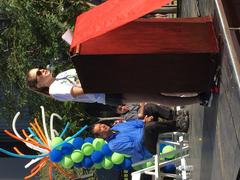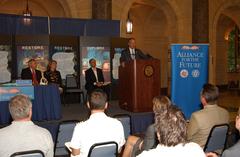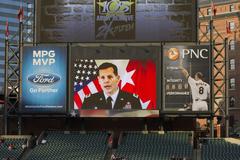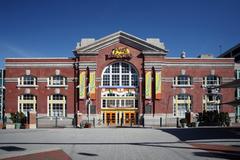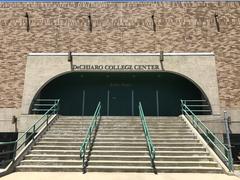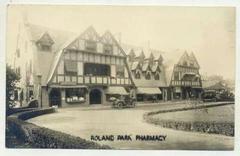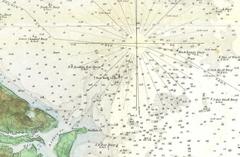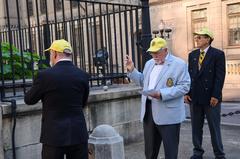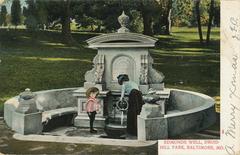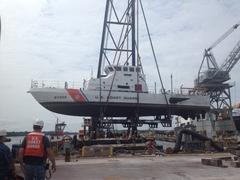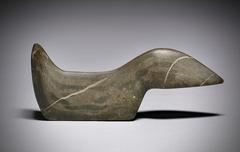
Port of Baltimore Visiting Hours, Tickets, and Historical Sites Guide
Date: 03/07/2025
Introduction
The Port of Baltimore is a cornerstone of American maritime history and a vibrant hub for both commerce and culture. Established in the early 18th century along the Patapsco River, it has transformed from a colonial tobacco trade center into one of the nation’s most vital gateways for global trade, especially known for its roll-on/roll-off cargo and automotive imports (expobusiness.com; marylandmatters.org).
Visitors can immerse themselves in a rich tapestry of history at sites like the USS Constellation museum ship, the Chesapeake & Ohio Canal Museum, and the historic Inner Harbor, home to the National Aquarium and Maryland Science Center (thetouristchecklist.com; Travel Around Places). The port also serves as a gateway for cruises, harbor tours, and seasonal festivals. Accessibility is prioritized, with various transit options and accessible facilities. Nearby Fort McHenry National Monument—where the U.S. national anthem was born—offers another layer of historical significance (nps.gov).
This detailed guide covers visiting hours, ticketing, tours, travel tips, and must-see attractions to help you make the most of your Port of Baltimore experience—whether you’re visiting for history, a family outing, or a cruise departure (Wikipedia).
Table of Contents
- Historical Overview: Colonial Roots to Modern Maritime Power
- Visitor Information: Hours, Tickets, Tours, Accessibility, and Tips
- Economic and Cultural Significance
- Inner Harbor and Top Attractions
- Fort McHenry National Monument: History and Visitor Guide
- FAQs
- Conclusion & Resources
Historical Overview: From Colonial Roots to Modern Maritime Power
Colonial Foundations and Early Growth
The Port of Baltimore dates to 1706, when Maryland’s colonial legislature designated a site on the Patapsco River as a port of entry (expobusiness.com). Its natural harbor and inland location made it ideal for defense and commerce. By 1729, Baltimore was officially established, quickly becoming a focal point for tobacco exports and imports necessary for the colony’s growth (sglusa.com). Throughout the 18th century, the port facilitated trade in agricultural goods while its deep waters sheltered ships from Atlantic storms (msa.maryland.gov).
Revolutionary War and Shipbuilding
During the Revolutionary War, Baltimore’s port supplied the Continental Army and gained renown for its shipyards. The introduction of the “Baltimore clipper”—fast and nimble vessels—cemented its reputation for shipbuilding excellence and expanded its reach into the Caribbean and South America (expobusiness.com; sglusa.com).
Industrialization and the Railroad Era
The 19th century saw rapid growth. The Baltimore and Ohio Railroad’s arrival in 1845 linked the port to the Midwest, and expanded cargo handling to include coal, cotton, and manufactured goods. Harbor improvements by the Army Corps of Engineers allowed larger ships to dock, further boosting trade (msa.maryland.gov).
Inner Harbor Renaissance
Once an industrial heartland, the Inner Harbor has been revitalized as a destination for cultural and family-friendly attractions. Notable sites include the USS Constellation and the Chesapeake & Ohio Canal Museum (thetouristchecklist.com).
Modernization and Milestones
Throughout the 20th and 21st centuries, the port embraced automation, expanded its terminals, and became a leader in containerized and roll-on/roll-off cargo. In 2023, it set records for container and RoRo cargo volumes (msa.maryland.gov).
Visitor Information: Hours, Tickets, Tours, Accessibility, and Tips
Visiting Hours & Ticketing
Many port areas are active commercial zones with restricted access, but key attractions are open to the public:
- USS Constellation Museum: 10 AM–5 PM daily. Tickets: $15 adults, $7 children (6–12), free under 6.
- Chesapeake & Ohio Canal Museum: Wed–Sun, 10 AM–5 PM. Free admission.
Tip: Book tickets in advance during peak seasons.
Guided Tours and Attractions
- Harbor Cruises: Narrated tours of the port and historic waterfront.
- Walking Tours: Explore neighborhoods like Fell’s Point.
- Maritime Festivals: Events such as SAIL250® Maryland and Airshow Baltimore feature tall ships and Navy vessels (visitmaryland.org).
Accessibility & Travel Tips
- Most museums and the Inner Harbor are wheelchair accessible.
- Reach the area via light rail, buses, and water taxis.
- Parking is available in nearby garages; plan for extra time during events.
- Spring through fall is best for outdoor activities.
Top Photography Spots
- Federal Hill Park: Panoramic views of the skyline and harbor.
- Fell’s Point Waterfront: Historic ships and charming streets.
- Inner Harbor Promenade: Ideal for sunset harbor photos.
Economic and Cultural Significance
Economic Impact
The Port of Baltimore supports over 15,000 jobs directly and 139,000 indirectly across shipping, logistics, and related industries (vanhollen.senate.gov; cbsnews.com). It generates more than $3.3 billion in personal income and $395 million in tax revenue annually. The port is the nation’s leader in roll-on/roll-off cargo, exporting billions in coal and machinery and importing $23 billion in automobiles and trucks (marylandmatters.org).
Resilience and Innovation
Despite events like the 2024 Francis Scott Key Bridge collapse, which temporarily interrupted operations, the port quickly resumed activity and continues to adapt to economic and logistical challenges (marketplace.org).
Inner Harbor and Top Attractions
Orientation and Layout
The Inner Harbor is Baltimore’s tourism center, packed with attractions, restaurants, and hotels. The cruise port is two miles away at South Locust Point, accessible by car, taxi, or rideshare (Wikipedia; Baltimore Examiner).
Cruise Port Experience
- Hours: Terminal opens by 8:00 AM on cruise days.
- Tickets: Purchased via cruise lines. Parking: $15–$20/day.
- Accessibility: ADA-compliant terminal with accessible restrooms and ramps.
Must-See Attractions
- National Aquarium: 9 AM–5 PM daily. Tickets: $39.95–$49.95 (adults), $29.95–$39.95 (children) (Travel Around Places).
- Historic Ships in Baltimore: Includes USS Constellation and three other vessels.
- Maryland Science Center: 10 AM–5 PM. Tickets: $25.95 (adults), $19.95 (children).
- Port Discovery Children’s Museum: 10 AM–5 PM. Family-friendly exhibits.
- Federal Hill Park: Year-round panoramic city and harbor views.
Notable Neighborhoods
- Fell’s Point: Cobblestone streets, historic pubs, and maritime legacy.
- Canton: Parks, waterfront dining, and shopping.
On-the-Water Experiences
- Harbor Cruises: Narrated sightseeing tours, $18–$25 (adults).
- Water Taxi: Day passes connect neighborhoods.
- Paddleboats/Pirate Ships: Seasonal family fun.
Dining & Shopping
The Inner Harbor offers everything from crab shacks to upscale seafood restaurants, plus shopping at Harborplace (currently under redevelopment) (Baltimore Magazine). For more options, visit Fell’s Point and Harbor East.
Visitor Tips
- Best Time: Fall for mild weather and fewer crowds (Alexandra Travel).
- Getting Around: Walk, use water taxis, or take public transit (Baltimore.org).
- Parking: Fell’s Point or Federal Hill often have better rates (I Travel For The Stars).
- Safety: Tourist areas are generally safe; use standard precautions at night.
- Accessibility: Most attractions and transit options accommodate disabilities.
Events & Highlights
- Artscape Festival: Free arts festival in August (Alexandra Travel).
- Kinetic Sculpture Race: Unique art race through city and harbor.
- Sports: Camden Yards and M&T Bank Stadium host major events.
Recent News
In March 2024, the MV Dali’s collision with the Francis Scott Key Bridge disrupted maritime traffic. The port reopened after 11 weeks, highlighting its resilience (Wikipedia).
Visitor Services
- Visitor Center: Inner Harbor hub for maps, tickets, and advice (Baltimore.org).
- Official Guides: Available in print and digital formats.
- Travel Insurance: Recommended for cruise and international travelers.
Fort McHenry National Monument: History and Visitor Guide
Historical Significance
Fort McHenry, built between 1798 and 1800, famously repelled a British attack during the War of 1812. The sight of the American flag flying after the bombardment inspired Francis Scott Key to write “The Star-Spangled Banner,” now the U.S. national anthem.
Hours and Tickets
- Hours: 9:00 AM–5:00 PM daily (last admission at 4:30 PM). Closed Thanksgiving, Christmas, and New Year’s Day. Check official site for updates.
- Tickets: $15/adult (16+), free for children under 16. Annual passes and military discounts available.
Tours and Programs
- Ranger-Led Tours: Daily educational programs and weekend living history events.
- Accessibility: Wheelchair accessible, with paved paths and ramps. Service animals welcome.
- Getting There: About 2 miles from downtown or the cruise terminal. Accessible by car, bike, or public transit; on-site parking is available.
Nearby Attractions
- Inner Harbor: National Aquarium, Maryland Science Center, historic ships.
- Fell’s Point: Waterfront dining and historic streets.
Photo Opportunities
Capture the iconic American flag, waterfront views, and reenactments—especially in the soft light of morning or late afternoon.
FAQs
- Food/Drink: Picnic areas available; alcohol prohibited.
- Pets: Only service animals permitted.
- Photography: Encouraged; drones prohibited.
- Events: Annual Star-Spangled Spectacular and other celebrations.
Frequently Asked Questions (FAQ)
Q: Can visitors access working port areas?
A: Access is restricted for safety, but museums and public waterfronts are open.
Q: Are guided tours available?
A: Yes, both walking and harbor tours provide historical and operational insights.
Q: What are the best times to visit?
A: Spring through fall for ideal weather and events.
Q: Is parking available?
A: Multiple garages serve the Inner Harbor; cruise terminal parking fills early on embarkation days.
Q: Are pets allowed?
A: Pets are generally not permitted in museums; service animals are allowed.
Conclusion
The Port of Baltimore offers a compelling blend of maritime heritage, modern commerce, and cultural vibrancy. From historic ships and museums to waterfront dining and lively festivals, the port area welcomes visitors of all ages and interests. Plan your visit with up-to-date information on hours and ticketing, and enhance your experience with guided tours and seasonal events. For history enthusiasts, Fort McHenry provides an immersive journey into America’s past.
Stay informed by downloading the Audiala app for personalized recommendations, explore our related articles, and follow us on social media for the latest updates. Discover the enduring legacy and lively atmosphere of Baltimore’s waterfront.
References
- Port of Baltimore Visitor Guide: History, Attractions, and Essential Tips for Your Visit, 2025
- Economic and Cultural Significance, 2025
- Economic and Cultural Significance, 2025
- Port of Baltimore Visitor Experience: Hours, Tickets, and Top Attractions, 2025
- Port of Baltimore Visitor Experience: Hours, Tickets, and Top Attractions, 2025
- Visiting Fort McHenry National Monument: History, Tickets, and Travel Tips, 2025
- Port of Baltimore Visitor Guide: History, Attractions, and Essential Tips for Your Visit, 2025
- Economic and Cultural Significance, 2025
- Port of Baltimore Visitor Experience: Hours, Tickets, and Top Attractions, 2025
- Port of Baltimore Visitor Guide: History, Attractions, and Essential Tips for Your Visit, 2025
- Economic and Cultural Significance, 2025
- Port of Baltimore Visitor Experience: Hours, Tickets, and Top Attractions, 2025
- Port of Baltimore Visitor Experience: Hours, Tickets, and Top Attractions, 2025
- Visiting Fort McHenry National Monument: History, Tickets, and Travel Tips, 2025
- Port of Baltimore Visitor Experience: Hours, Tickets, and Top Attractions, 2025
- Port of Baltimore Visitor Guide: History, Attractions, and Essential Tips for Your Visit, 2025







